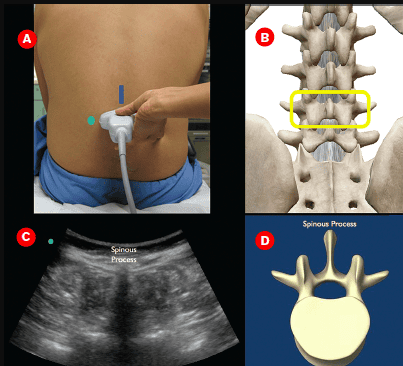Article by Specialist Doctor I Trần Thị Ánh Hiền - Anesthesiologist - Department of Anesthesia and Surgery - Vinmec Central Park International General Hospital
Back pain after spinal anesthesia is usually just a mild discomfort and will quickly heal through the body's natural recovery mechanisms in the first few days. However, if the spinal anesthesia process damages the ligaments in the lumbar region, it can still cause back pain for the patient, although this is quite rare.
1. What is Spinal Anesthesia?
Spinal anesthesia is an anesthetic method used for surgeries from the navel down, making you feel no pain during the surgery. Depending on the patient's health condition, the doctor will decide whether to use this method.
Spinal anesthesia is indicated for the following cases:
- Lower limb orthopedic surgery
- Hemorrhoidectomy, anal fistula, inguinal hernia
- Ureteral lithotripsy in the pelvic region
- Cesarean section
To perform the procedure, the doctor will inject a local anesthetic into the lumbar region, then use a small needle to pierce the skin and ligaments into the spinal canal. The doctor will then inject the anesthetic through this needle into the cerebrospinal fluid, which will temporarily inhibit the conduction of nerve roots, resulting in numbness and no pain during surgery.
2. Does the Patient Experience Back Pain After Spinal Anesthesia?
There used to be many beliefs that spinal anesthesia causes back pain and that this back pain would last for a long time afterward. However, recent studies worldwide have shown that because the needles used in spinal anesthesia are increasingly smaller in diameter, tissue damage is minimal. However, if the spinal anesthesia process damages the ligaments in the lumbar region, it can still cause back pain for the patient, although this is quite rare.
After surgery, when the effect of the spinal anesthetic wears off, the needle puncture site usually no longer causes pain; if there is any discomfort, it is just mild and will quickly heal through the body's natural recovery mechanisms in the first few days.
However, some patients experience back pain after spinal anesthesia due to:
- Heavy work or incorrect sleeping posture before surgery
- Pre-existing conditions such as disc diseases, ligament issues, arthritis, spinal inflammation, scoliosis, degeneration, herniated discs, or existing injuries
Therefore, patients with back pain need a thorough examination to determine the cause and develop the most appropriate treatment plan.

3. What to Do When Experiencing Back Pain After Spinal Anesthesia?
Back pain after spinal anesthesia can be treated with the following techniques:
- Performing physical therapy exercises and specialized movements to restore mobility, strengthen the spine, muscles, and joint flexibility
- Using the PRP technique (Platelet-Rich Plasma) to inject into damaged ligament areas to help heal the damaged tissues
4. What Should Patients Pay Attention to When Undergoing Spinal Anesthesia?
- Patients should cooperate well with the anesthesiologist and assistant, avoiding movement during the procedure
- Rest according to the doctor's instructions
- Avoid strenuous activities, engage in gentle movements
- Avoid using stimulants that affect the nervous system, such as alcohol and tobacco
In summary, spinal anesthesia should be performed in reputable places by skilled and specialized doctors to ensure patient safety.
Please dial HOTLINE for more information or register for an appointment HERE. Download MyVinmec app to make appointments faster and to manage your bookings easily.














